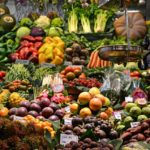This is Part 2 of my questions for Alibaba on Singles’ Day. Part 1 is located here. Question 5: What Are the Next Hard-to-Replicate Physical Assets? Alibaba is a competitive fortress. This comes from multiple factors like network effects, consumer habits, economies of scale (particularly in logistics), complementary platforms (especially in financial services), data advantages […]








